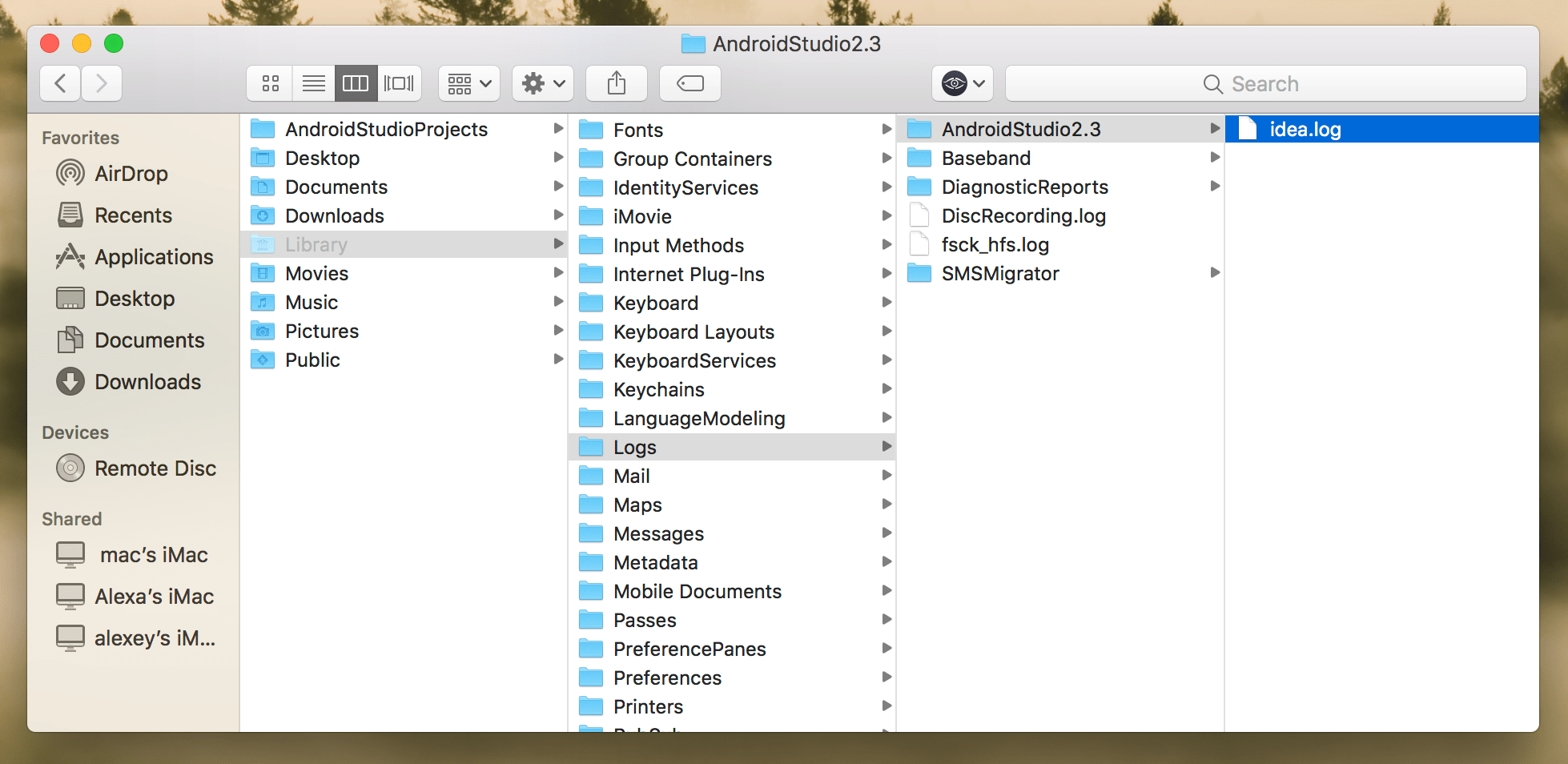

- #Android studio mac install#
- #Android studio mac update#
- #Android studio mac android#
- #Android studio mac license#
Select variable Path and click Edit button and add %ANDROID_HOME%\tools %ANDROID_HOME%\tools\bin %ANDROID_HOME%\platform-tools at the end of its value. #Android studio mac android#
Click the New… button to add a new system variable, input ANDROID_HOME as the variable name, and input the Android SDK location directory path ( such as C:\Users\Administrator\AppData\Local\Android\Sdk ) as the variable value.  Click the Advanced system settings link on the left panel, it will popup the System Properties window, click the Environment Variables button to open the Environment Variables window. This will open the windows system configuration window. Right-click the computer icon in Windows file explorer left side, click Properties menu item in the popup menu list. Then you can find the Android SDK Location directory path on the right side ( in this example, the Android SDK location path is C:\Users\Jerry\AppData\Local\Android\Sdk ), remember it.ġ.2 Set %ANDROID_HOME% and %Path% System Environment Variable. Expand Appearance & Behavior -> System Settings -> Android SDK menu item on the left side of the popup window. Open android studio, click File -> Settings menu item in the top menu bar.
Click the Advanced system settings link on the left panel, it will popup the System Properties window, click the Environment Variables button to open the Environment Variables window. This will open the windows system configuration window. Right-click the computer icon in Windows file explorer left side, click Properties menu item in the popup menu list. Then you can find the Android SDK Location directory path on the right side ( in this example, the Android SDK location path is C:\Users\Jerry\AppData\Local\Android\Sdk ), remember it.ġ.2 Set %ANDROID_HOME% and %Path% System Environment Variable. Expand Appearance & Behavior -> System Settings -> Android SDK menu item on the left side of the popup window. Open android studio, click File -> Settings menu item in the top menu bar. #Android studio mac install#
Before you can configure it, you should first get the android SDK install directory following the steps below. 1.1 Get Android SDK Install Directory Path. Configure Android SDK Variable In Windows. I get error emulator: qemu backend: argv = "./emulator/qemu/darwin-x86_64/qemu-system-armel"Įmulator: qemu backend: argv = qemu backend: argv = "-no-audio"Įmulator: qemu backend: argv = "-no-window"Įmulator: qemu backend: argv = "-verbose"Įmulator: Concatenated backend parameters: #avdmanager create avd -n Nexus6P -k "system-images android-23 google_apis x86_64" -b google_apis/x86_64 -c 100M -d 7 -fĪvdmanager create avd -n test -k "system-images android-25 google_apis armeabi-v7a" -b armeabi-v7a -c 100M -d 7 -fĬd $(dirname $(which emulator)) &. Sdkmanager "system-images android-25 google_apis armeabi-v7a" I'm using brew cask install android-sdk and my configuration is this export ANDROID_SDK_ROOT=/usr/local/share/android-sdkĮxport ANDROID_HOME=/usr/local/share/android-sdkĮxport PATH="$ANDROID_SDK_ROOT/platform-tools:$ANDROID_SDK_ROOT/tools:$PATH" If everything goes smoothly on a moderate network connection you can expect this process to take 2-4 I'm trying to run the emulator but I get android sdk not found, has anyone see same problem. Install Eclipse, IntelliJ, Android Studio, or your other favorite IDE. #Android studio mac update#
Note: It looks like there might be an issue with brew update and the android-sdk formula. Periodically run these commands again to ensure you're staying up to date: brew update Update your paths (bonus points to a better solution to the hardcoded build tools version): export PATH=$ANT_HOME/bin:$PATHĮxport PATH=$ANDROID_HOME/platform-tools:$PATHĮxport PATH=$ANDROID_HOME/build-tools/19.1.0:$PATH Update your environment variables: export ANT_HOME=/usr/local/opt/antĮxport ANDROID_HOME=/usr/local/opt/android-sdkĮxport ANDROID_NDK_HOME=/usr/local/opt/android-ndk Check out the "Configuring VM Acceleration on Mac" section here: #Android studio mac license#
Install all of the Android SDK components (you will be prompted to agree to license info and then this will take a while to run): android update sdk -no-ui Use Homebrew to install Android dev tools: brew install ant Make sure the doctor is happy (do what it tells you): brew doctor Install Homebrew: ruby -e "$(curl -fsSL )" XCode command line tools are installed ( xcode-select -install will prompt up a dialog).Prerequisites (for Homebrew at a minimum, lots of other tools need these too):

Here is a high level overview for what you need to do to get most of an Android environment setup and maintained.







 0 kommentar(er)
0 kommentar(er)
